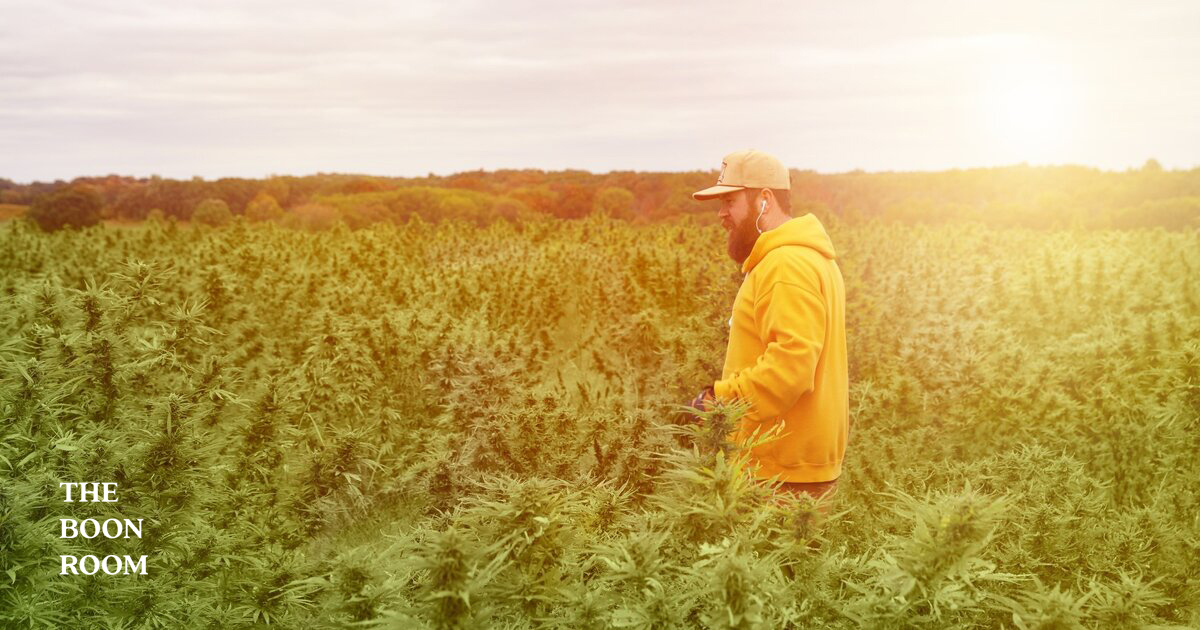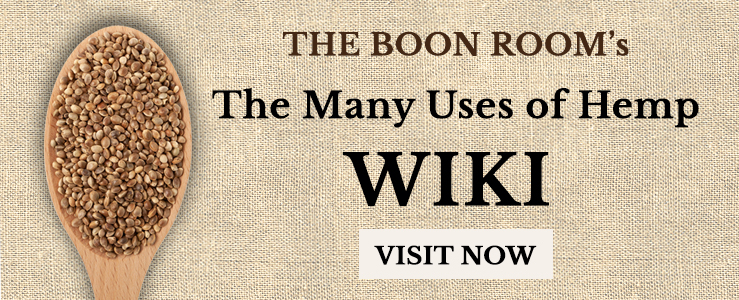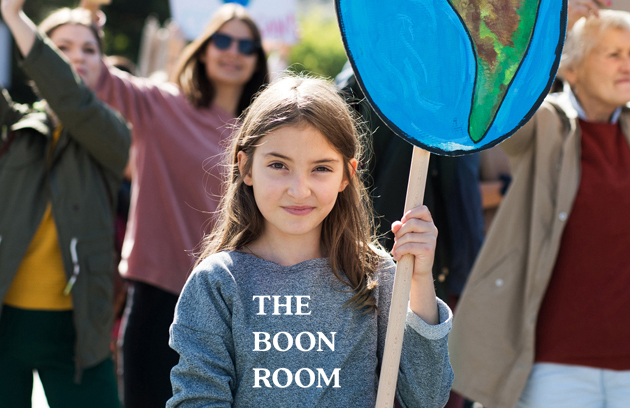Industrial hemp is a versatile plant-based material that can be used as a replacement for fabric, wood, paper, plastic… Over the last few years we’ve seen a ton of new hemp based products on the market.
Most hemp products are made from the tough but flexible stalk material of the Cannabis sativa L plant. Hemp is actually a dioecious plant, which means it can be separated into separate male and female plants. And, these amazing plants have been serving a wide variety of purposes for over 10,000 years!
While we get fiber for textiles and paper products from the plant’s stems or stalks, we also get protein from the seeds and oils from the leaves to make a wide range of applications in everything from cosmetics to dietary supplements.
Industrial Hemp Vs. Marijuana
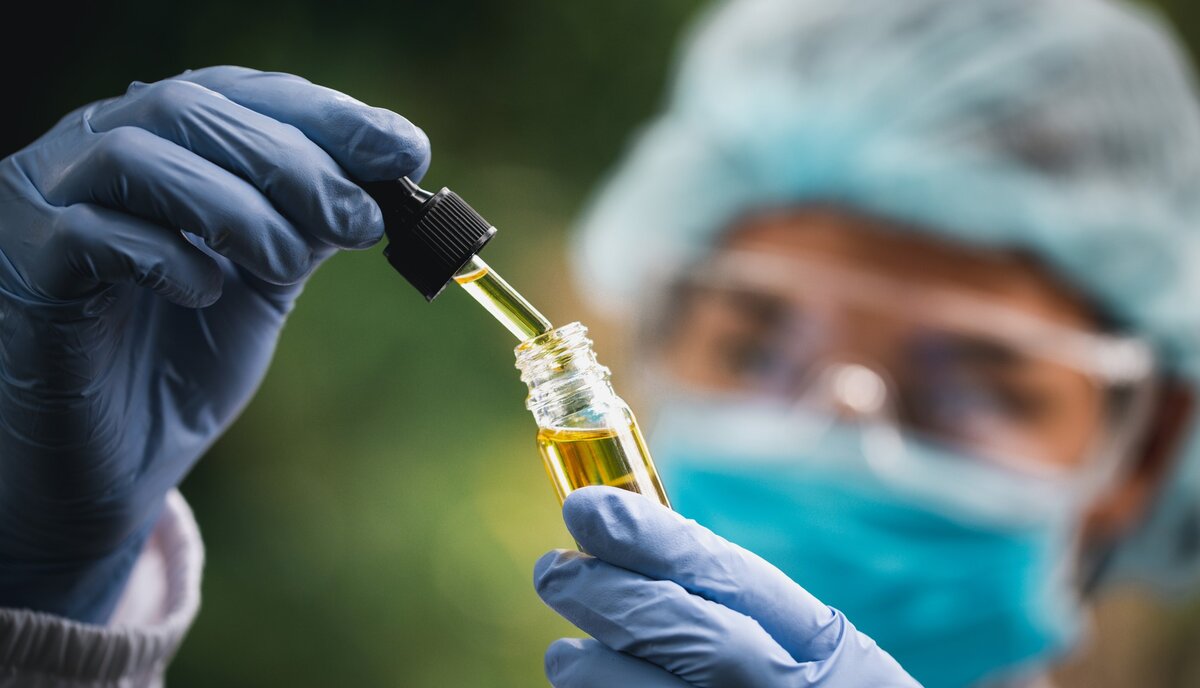
Cannabis, or its non-scientific name “marijuana” generally refers to a combination of psychoactive and non-psychoactive compounds (most notably the major two: THC and CBD) that can be derived from the same plant. THC produces a psychoactive change in perception, commonly referred to as a “high,” when smoked or ingested by humans.
Hemp does not.
It’s worth nothing that most don’t think CBD is a psychoactive compound, but it actually is! Just not in the same way THC is. While there is no “high” from CBD, it is shown to help with anxiety, depression, and seizures.
And, what is a psychoactive substance?
“A drug or other substance that affects how the brain works and causes changes in mood, awareness, thoughts, feelings, or behavior.”
If CBD can help you with anxiety, is that not a mood or behavior modifying chemical?
What Is the Difference Between Hemp and Marijuana?
Asking the difference between hemp and marijuana is almost like asking the difference between a 2’x4’ and a bottle of maple syrup! Both products are harvested from the same renewable resource, but the applications are completely different.
Industrial hemp can end up in your clothes, building materials, packaging, foods, fuels, or shampoo. Marijuana only refers to psychoactive cannabis flower, or foods or extracts made from it.
There’s also a big difference in the way the two products are cultivated. Marijuana plants are grown with highly controlled temperature and lighting conditions that help maximize flower size, and any seed-bearing male plants are discarded.
Industrial hemp is grown outdoors to maximize overall plant size, with no consideration for how well the plants will flower. Male plants, with their oil-rich seeds, are preferred when growing industrial hemp.
Myths About Hemp
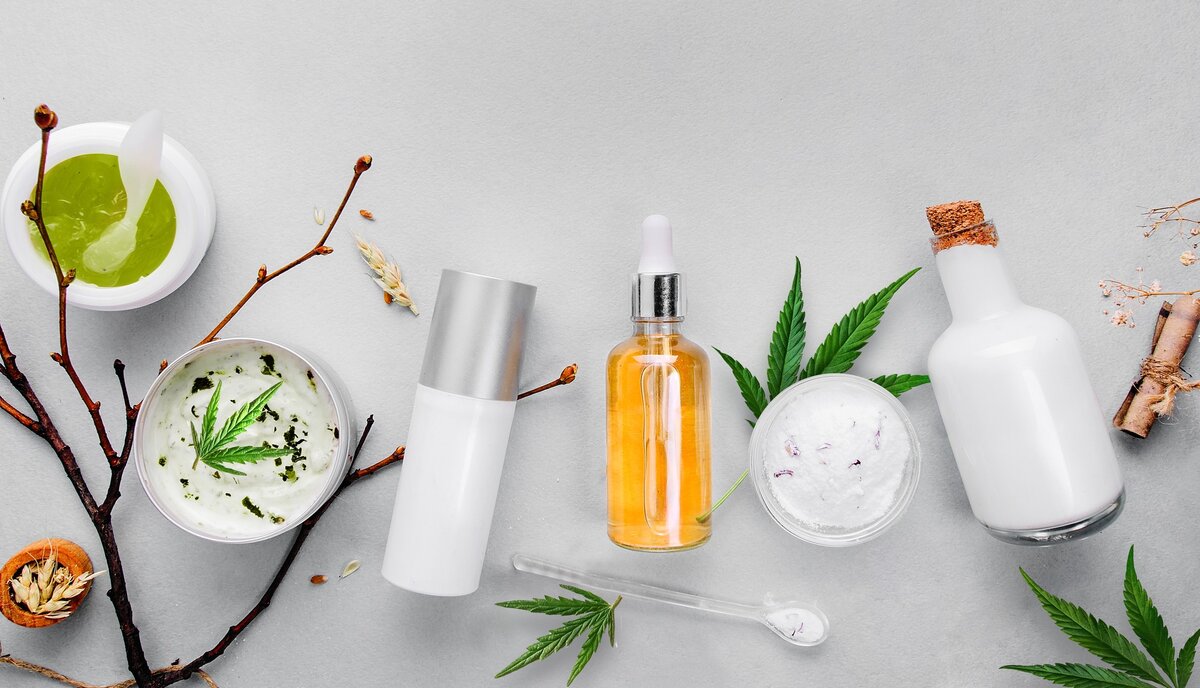
Hemp’s association with marijuana, the constantly evolving public perception of drugs, and aggressive lobbying by certain segments of the agricultural industry have all helped to popularize myths about hemp and industrial hemp products.
Can you smoke hemp?
You can try, but you’ll have a bad time. The fibers we usually refer to as hemp are a stringy, woody material that produces a much harsher and less flavorful smoke than the cannabis flower material harvested for THC consumption. Plants grown for industrial hemp production do also flower, but the buds are small, full of seeds undesirable to smokers, and very low in psychoactive THC content.
For that reason, there would be little point in a marijuana user even attempting to smoke hemp. Cannabis plants grown for industrial hemp production have a THC content well under 1%. In some places, it legally has to be less than 0.3%. For marijuana to have any effect on humans, it needs at least 3% THC, with most modern commercial products testing well over 15%!
Is industrial hemp farming a public health risk?
Because an industrial hemp farm does not produce anything resembling a recreational drug, it actually poses less potential risk to public health than a cornfield. Modern corn has been genetically modified to maximize sugar content, a practice linked to the United States’ obesity and nutrition insecurity epidemics. There is no research that links industrial hemp farming to any specific public health risk.
Is industrial hemp bad for the environment?
Cannabis sativa is a naturally pest- and fungus-resistant plant, so hemp crops require little or no chemical treatment to grow successfully.
Hemp is also able to return up to 70% of its nutrients to the soil when left to dry in the field, so hemp farming across multiple seasons requires less fertilizer than other common crops (but it does draw a great deal of nutrients prior to this recycling process due to how fast and large it grows!) Hemp also tends to outgrow competing weeds, further reducing the need for any sort of fertilization.
When rotated properly with other crops, the deep root system of the cannabis sativa plants also helps to prevent erosion and naturally aerates the soil.
This combination of factors makes industrial hemp farming very environmentally friendly compared to other agricultural enterprises in terms of waste run-off and local pollution.
Additionally, hemp’s potential as a biofuel actually puts industrial hemp farming in a position to help the global environment in the coming years by providing another renewable alternative to fossil fuels.
Does the THC level of industrial hemp grow year after year?
Cannabis sativa in its natural state is low in THC. A study of “wild” hemp in the USA, Vietnam & Australia came up with an average THC content of 0.6%, which is not enough to produce any psychoactive effects in humans.
Most “wild” cannabis in the USA is believed to actually be left over from commercial hemp crops of the 1930s before production was prohibited as part of the emerging “war on drugs.” These plants, called “ditchweed” locally, still test at a negligibly low THC level after many generations of undisturbed natural growth, so there is no reason to believe industrial hemp plants in a controlled environment would mutate into psychoactive marijuana plants as generations pass.
The THC levels of cannabis plants grown for recreational use have indeed been rising over the years, but high-THC marijuana plants are the result of careful, deliberate breeding. Cannabis sativa does not grow “stronger” throughout the generations without a skilled cultivator working to make that happen.
Isn’t hemp just used to make ropes?
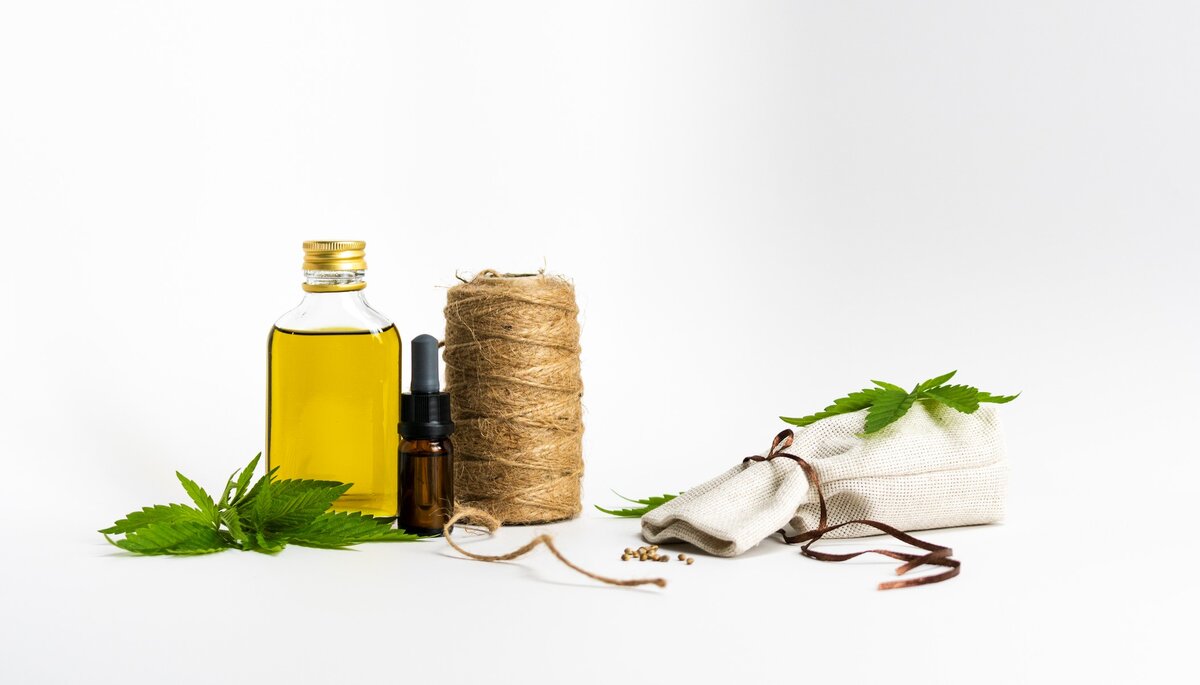
A hempen rope is indeed a fine thing, but each plant contains a wealth of other materials that can be used in many different ways.
Even if we’re just talking about harvesting the fibers, the hemp plant can be divided into two different products. The flexible bast fibers are most often used for creating cordage and fabric, while the woody core called the hurd is stiffer and lends itself to building applications.
Other parts of the hemp plant have entirely different uses, with the seeds being of particular interest. Hemp seeds are rich in oil, and hemp oil is rich in CBD, which has medicinal value.
Is hemp some kind of new fad material?
Many people are just beginning to explore the potential of industrial hemp due to the trend of marijuana laws being relaxed or revoked, but hemp has actually been used to make clothes as early as the second century B.C., according to archaeological findings in China.
For early American settlers, it was not only legal to grow hemp—it was required! King James I required every Jamestown landholder to grow 100 hemp plants, which were used to make canvas and cordage for the British Navy. Hemp decrees were also issued in colonial Connecticut and Massachusetts.
Hemp remained a major agricultural crop in parts of the USA as late as the 1930s. Aggressive marijuana prohibition laws enacted in 1937 effectively ended the industry, though it was revived for a while in the 1940s as a means of supplying the U.S. Navy during wartime.
Emergent uses for hemp, such as replacing plastics, are merely the latest developments in a centuries-long story of humans experimenting with hemp. Throughout human history, hemp has found good use in everything from burial cloths to lubricating heavy machinery.
What Is Considered Industrial Hemp?
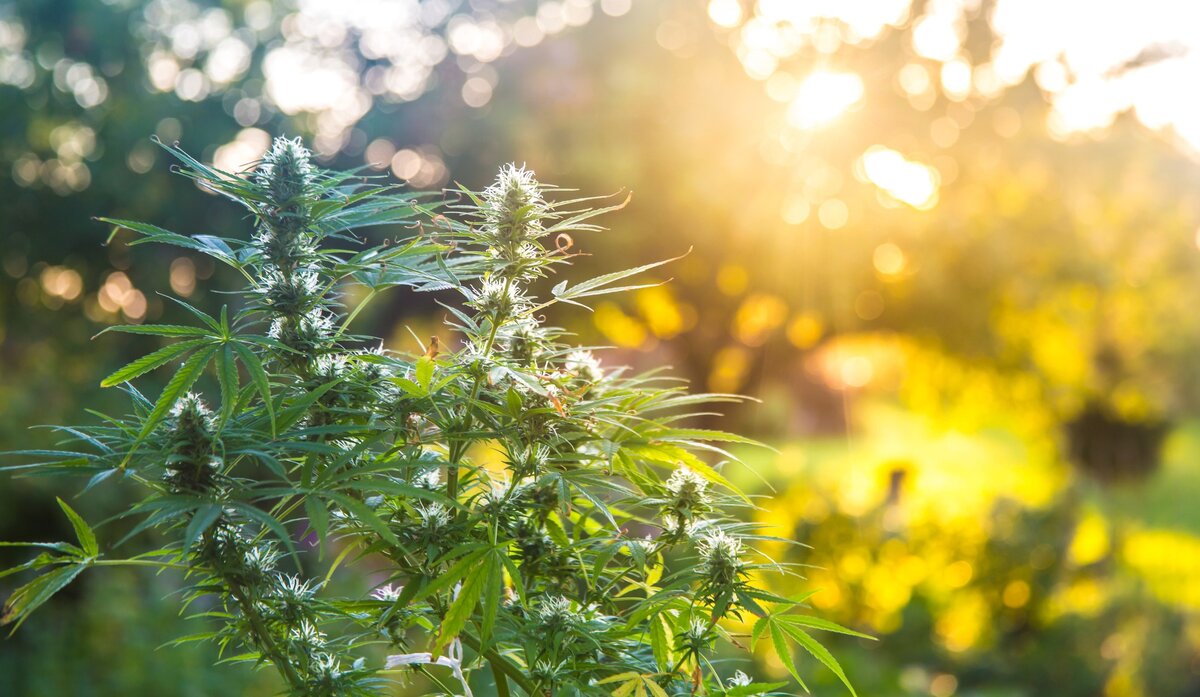
“Industrial hemp” can refer to any agricultural operation that grows low-THC cannabis sativa plants for their fibers or oils, then sells that hemp commercially or uses it to create consumer products. Industrial hemp can go to market in a staggering variety of forms, from cutting-edge textiles and compounds to beauty and hair products to fossil fuel alternatives to health foods!
Is Hemp Part of the Cannabis Industry?
That depends on how you define “cannabis.” Most people only think of medicinal and recreational THC products when talking about “the cannabis industry,” but hemp is indeed derived from the cannabis sativa plant, and it’s high in other medicinally useful compounds like CBD.
The link between hemp and CBD creates some overlap between the two industries, but the production of industrial hemp is still first and foremost an agricultural endeavor, while “the cannabis industry” tends to refer more broadly to the supply and distribution of high-THC marijuana products.
Is Hemp Used Medically?
Due to its CBD content, many doctors, patients, and researchers believe hemp, and hemp oil, in particular, has a high potential for medical use. The USA even saw its first FDA-approved CBD drug come to market in 2018.
Some of the most promising medical applications for CBD are:
- Pain management
- Anxiety, depression, and stress
- Seizures and epilepsy
- Cancer symptoms
- Skincare
- Brain health
The efficacy of CBD for these issues, and the full range of medical possibilities for hemp products, are still being explored. Laws surrounding the use and research of cannabis plants are complex, frequently changing, and differ from place to place, all of which can cause delays in research and imperfect experiments. Some studies on CBD and epilepsy, for example, relied on user feedback and did not include controlled dosage or firsthand observation.
CBD isn’t the only substance in hemp that has medical potential, however. For example, hemp seed oil is also high in gamma linolenic acid (GLA), a nutritious fatty acid that is a key component of breast milk.
Hemp oil is widely considered safe for human consumption, though side effects of sleepiness, fatigue, or stomach upset have sometimes been reported.
What is The Difference Between Hemp, CBD and THC?
CBD can be produced from hemp plants, but “hemp” and “CBD” are two different terms with separate and distinct meanings.
“Hemp” can refer to any cannabis sativa plant with a low THC level (usually less than 0.5%, with legal restrictions in some places requiring hemp to test under 0.3%). Hemp might also refer to the fibers harvested from such a plant or the products made with those fibers.
“CBD” specifically refers to cannabidiol, a medicinally useful compound extracted from cannabis sativa plants.
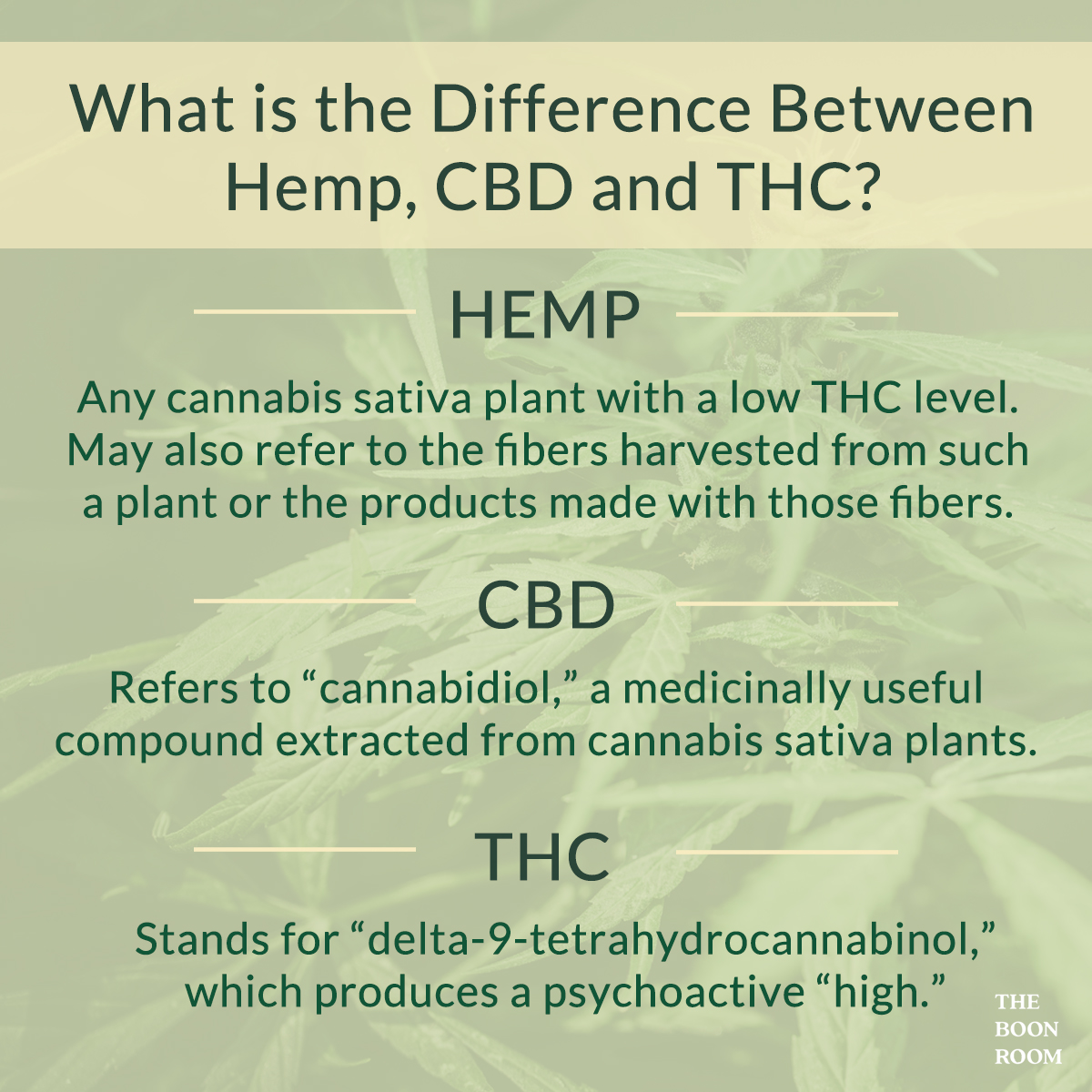
Neither “hemp” nor “CBD” is the same thing as “marijuana.” Marijuana refers only to cannabis flowers (and derived products) that contain THC and produce a psychoactive “high” in the user.
There is some debate as to whether CBD can truly be called “non-psychoactive” since it is reported to affect mental states like depression and anxiety. Most people refer to it as non-psychoactive because it does not produce the euphoric “high” THC is known for and therefore has no market as a recreational drug.
While “CBD” and “marijuana” always refer to consumable products used for their medicinal or recreational effects, hemp can go to market in forms such as textiles, ropes, plastic substitutes, and building materials.
Hemp and Marijuana: The Same, but Different
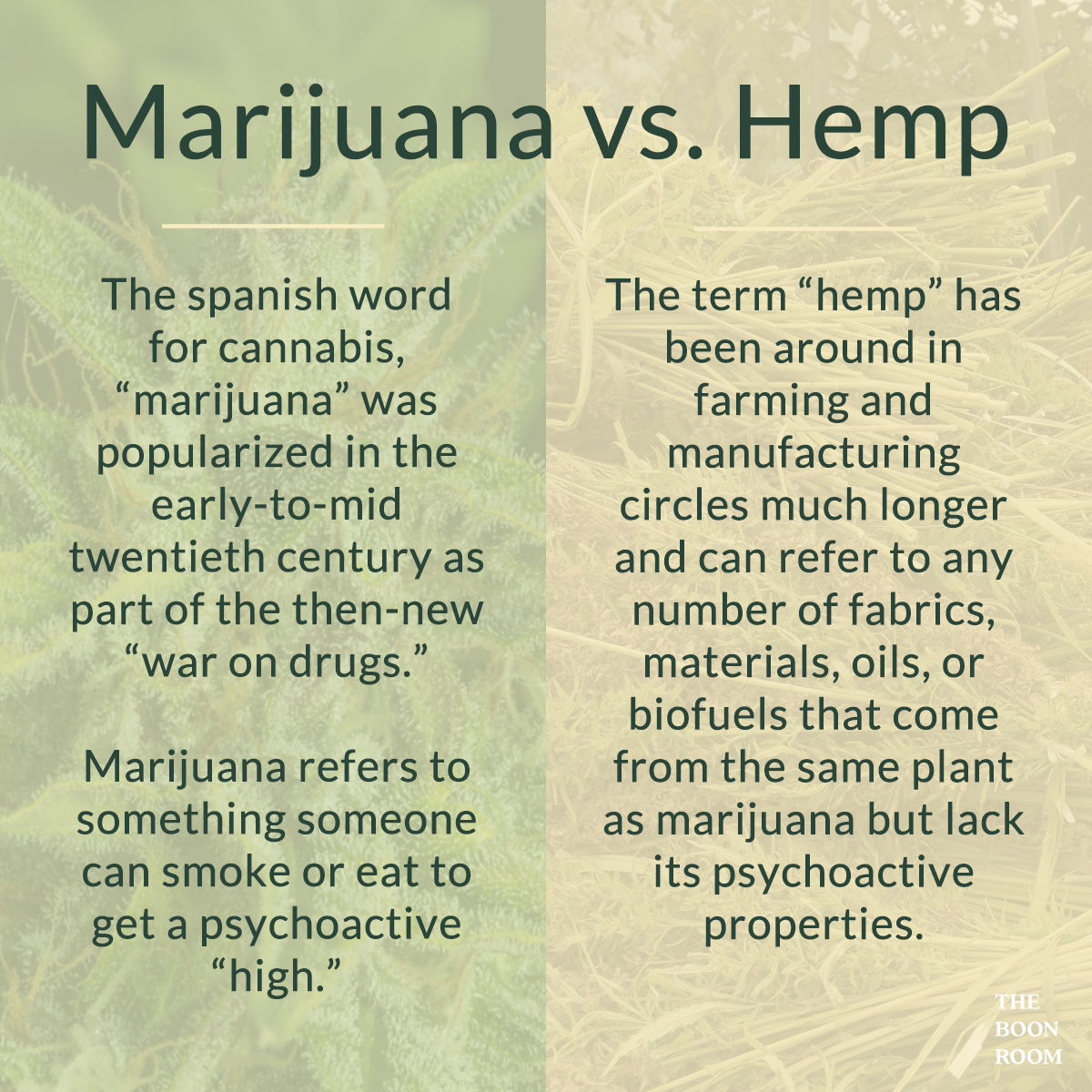
An easy way to remember the difference between hemp and marijuana is to remember that the term “marijuana” was popularized in the early-to-mid twentieth century as part of the then-new “war on drugs.” Marijuana, as you might guess by speaking or looking at the word, is a Spanish term for the cannabis plant. Many historians believe supporters of prohibition in the USA adopted the word as a way to link drug use to immigration. Marijuana, then, always refers to something someone can smoke or eat to get a psychoactive “high.”
The term “hemp” has been around in farming and manufacturing circles much longer and can refer to any number of fabrics, materials, oils, or biofuels that come from the same plant as marijuana but lack its psychoactive properties.
Conclusion: Cannabis is a Complicated Plant
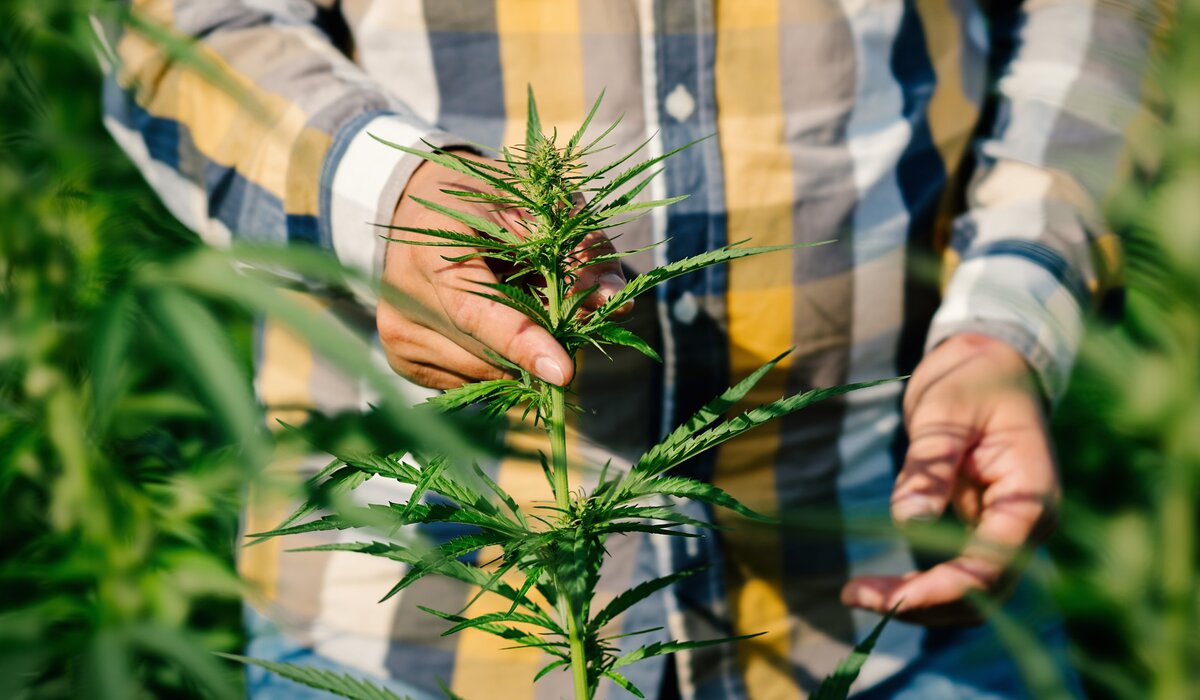
Hemp has hundreds, if not thousands of uses. However, under US Federal law hemp derived CBD is legal, while CBD derived from cannabis is not, despite the fact that both come from the same plant. Although sativa and indica were really meant to be visual identifiers of the plant, and not an indicator of the effects, many have confused the terminology. Additionally, strains have been spliced and modified, so it’s nearly impossible to tell what type of plant you have simply by looking at it. This means that plants have to be lab tested to determine the THC content, or potential psychoactive properties.
Thankfully this confusing system with such complicated distinctions is becoming clearer as cannabis, in all of its forms, becomes legal in every state.
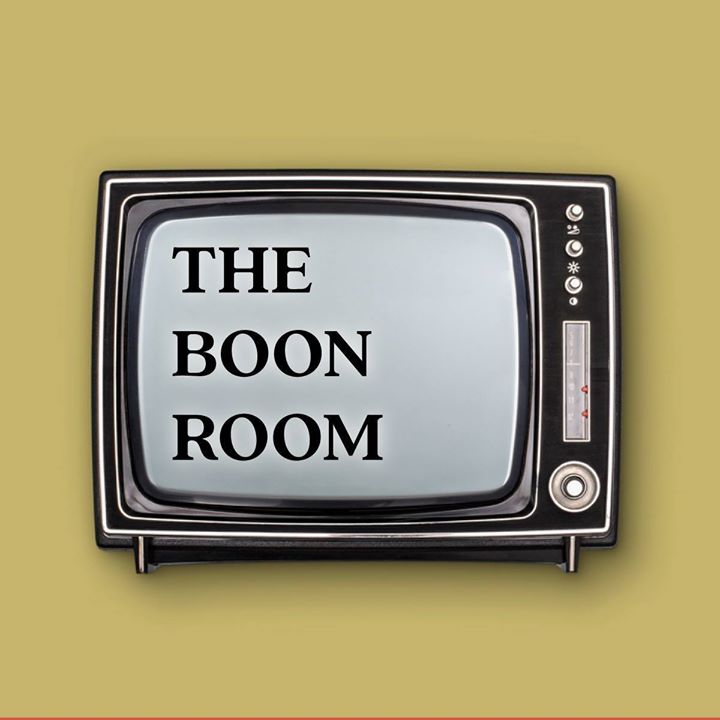
The Boon Room is more than a website, brand or service. It’s an idea. It’s a project. It’s a mission. It’s a coming together of companies, investors, cultivators, manufacturers, distributors, retailers and inspired entrepreneurs who believe businesses need to look for ways to invest in sustainablity.
